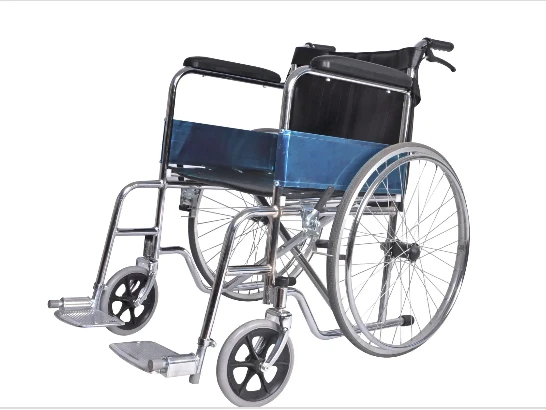Welcome to our websites!
Lightweight Wheelchair for Easy Mobility and Travel Convenience
The Evolution and Importance of Portable Wheelchairs
In a world that constantly strives for inclusivity and accessibility, the portable wheelchair emerges as a symbol of empowerment and independence for individuals with mobility challenges. This ingenious innovation has transformed the lives of many, providing not only a means of transportation but also a vehicle for social engagement and participation in everyday activities.
Portable wheelchairs, also known as travel wheelchairs, are designed to be lightweight and compact. Unlike traditional wheelchairs, which can be bulky and difficult to maneuver in tight spaces, portable wheelchairs are engineered to be easily transportable. Most models weigh between 15 to 30 pounds and can be folded or disassembled into smaller components, allowing them to fit into car trunks or overhead compartments on airplanes. This portability ensures that users can travel with confidence, whether going on a vacation, visiting family, or simply navigating the urban landscape.
The development of portable wheelchairs has been significantly influenced by advancements in materials and technology. Traditionally, wheelchairs were often made from heavy metals, making them cumbersome and difficult to handle. However, the introduction of lightweight materials such as aluminum and carbon fiber has dramatically reduced their weight without compromising strength and durability. Additionally, innovations in design, such as the use of ergonomic features and adjustable components, have enhanced comfort and usability, catering to a diverse range of needs.
One of the most notable aspects of portable wheelchairs is their role in promoting independence. For many individuals with limited mobility, reliance on others for transportation can be both frustrating and disempowering. Portable wheelchairs provide users with the ability to navigate their environments independently, fostering a sense of autonomy. This newfound freedom encourages social interaction, as individuals can participate more fully in activities, from attending events to enjoying outdoor excursions.
portable wheelchair

Moreover, the presence of portable wheelchairs has significant implications for public spaces and services. Cities around the globe are increasingly recognizing the importance of accessibility, leading to improved infrastructure. Curb cuts, public transportation accommodations, and accessible venues are becoming more commonplace, allowing individuals in portable wheelchairs to engage more freely in their communities. This push for inclusivity not only benefits those with mobility impairments but also fosters a culture of awareness and compassion among the general public.
However, despite the advancements in portable wheelchair technology and design, challenges remain. Accessibility issues persist in various environments, including older buildings and outdoor spaces that may not be designed to accommodate wheelchair users. Advocacy for better policies and infrastructure continues to be crucial in ensuring that everyone, regardless of their mobility level, can enjoy equal access to services and opportunities.
In addition to advocating for better infrastructure, the importance of portable wheelchairs extends into the medical realm. They are not only used by individuals with permanent mobility impairments but also by those recovering from surgery or injury. The ability to provide mobility support during recovery can lead to improved physical health outcomes and a quicker return to daily activities.
In conclusion, portable wheelchairs represent a significant advancement in assistive technology, enhancing the quality of life for countless individuals facing mobility challenges. Their designs promote independence, social engagement, and inclusivity, while ongoing advocacy for better accessibility continues to be vital. As technology evolves and awareness grows, the future looks promising for portable wheelchairs, ensuring that more individuals can enjoy the freedom to navigate their worlds confidently and independently. Embracing these innovations can lead to a society where mobility challenges do not hinder participation, but rather inspire a commitment to accessibility for all.
-
Transforming Healthcare with Hospital FurnitureNewsJun.24,2025
-
Rehabilitation EquipmentNewsJun.24,2025
-
Mobility and Independence with WheelchairsNewsJun.24,2025
-
Freedom of Mobility with Our Rollator WalkersNewsJun.24,2025
-
Comfort and Independence with Commode ChairsNewsJun.24,2025
-
Bathing Safety and Independence with Shower ChairsNewsJun.24,2025
-
Navigating the Wholesale Landscape of Electric Mobility Solutions: Key Considerations for Power Wheelchair DealersNewsJun.10,2025











